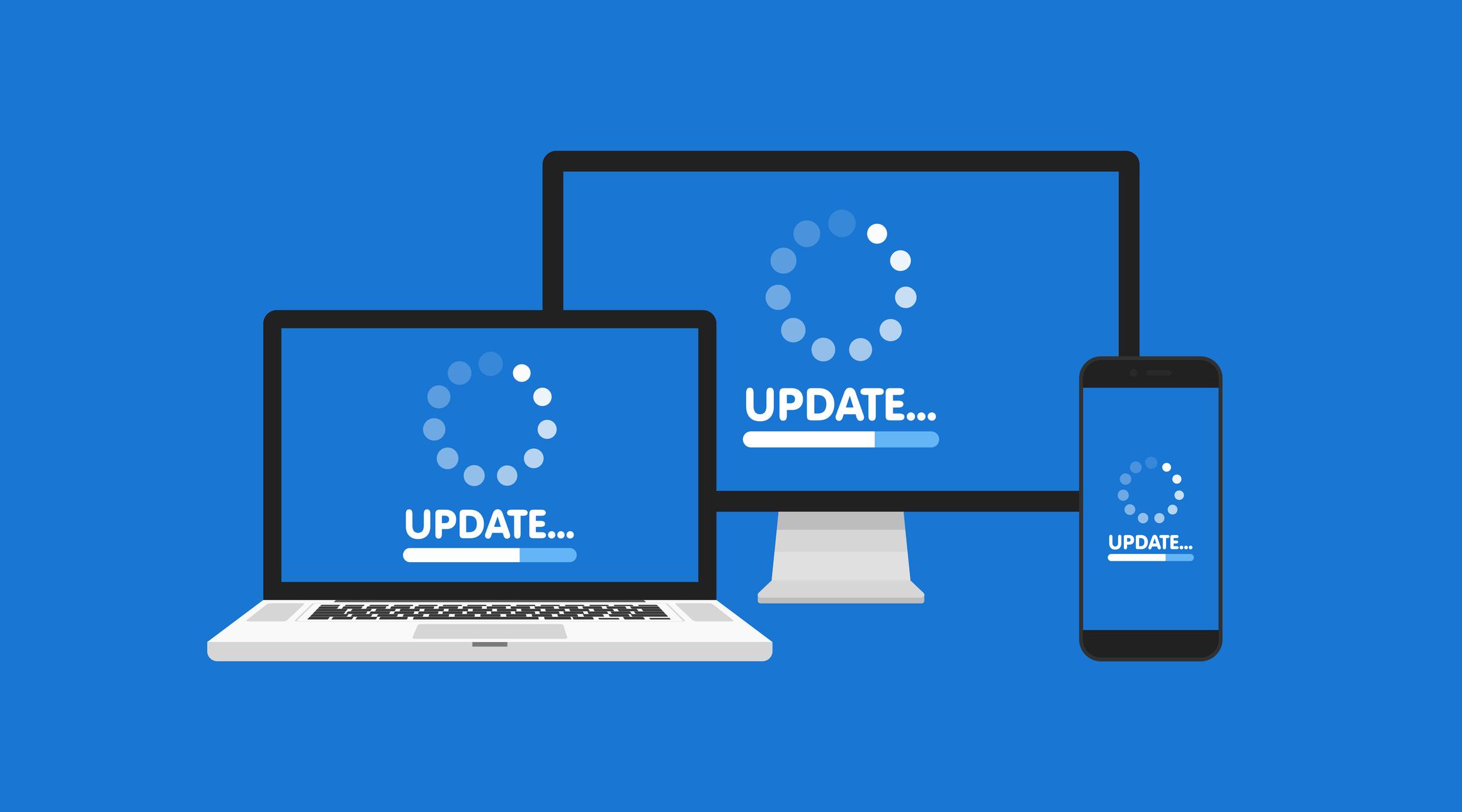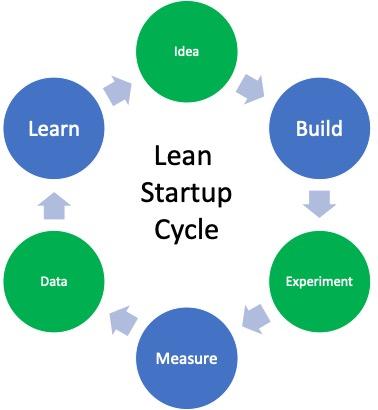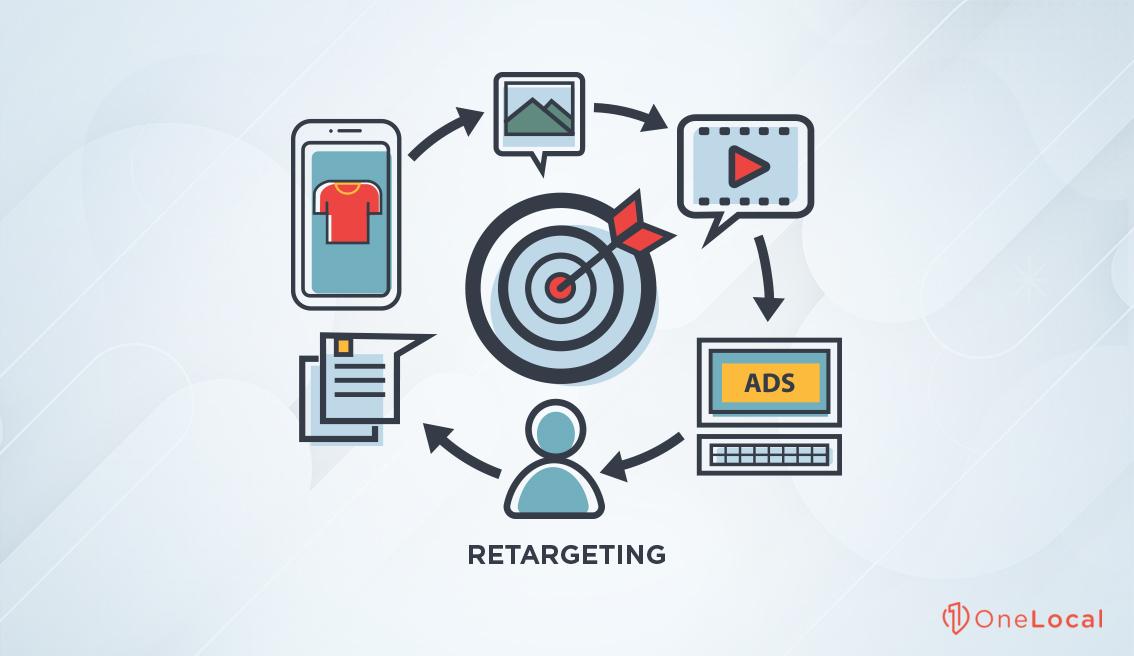
In today’s fast-paced world, where options abound and competition is just a click away, building strong customer relationships has never been more crucial. Think about it: would you rather be just another name on a list, or a valued partner in your customers’ journey? The truth is, genuine connections can set your business apart, fostering loyalty, encouraging repeat business, and even turning customers into passionate advocates. So, how do you create those lasting bonds? In this article, we’re diving into 15 top strategies that will not only enhance your customer interactions but also transform the way you approach your business relationships. Whether you’re just starting out or looking to strengthen your existing connections, these insights will help you cultivate loyalty and trust that stands the test of time. Ready to unlock the secret to lasting customer relationships? Let’s get started!
Understanding the Importance of Lasting Customer Relationships
Building lasting customer relationships is essential for any business looking to thrive in today’s competitive landscape. Customers are no longer just numbers; they are individuals with preferences, needs, and expectations. When businesses prioritize nurturing these relationships, they cultivate trust, loyalty, and advocacy.
Understanding your customers on a deeper level is the foundation for a strong relationship. This involves actively listening to their feedback and adapting your offerings accordingly. By doing so, you show that you value their opinions, which fosters a sense of belonging. Personalization plays a crucial role here; tailored experiences make customers feel special, and 83% of consumers are more willing to return to a brand after a personalized experience.
Transparency is another pillar of a solid customer relationship. Customers appreciate honesty, whether it’s about product availability, pricing, or company policies. Open lines of communication help to build trust, making customers more likely to engage with your brand. Consider implementing regular updates through newsletters or social media platforms to keep them informed and engaged.
| Key Elements | Customer Impact |
|---|---|
| Personalization | Enhances customer experience and loyalty |
| Transparency | Builds trust and encourages long-term engagement |
| Consistency | Reinforces brand reliability and customer expectations |
| Feedback | Informs improvements and shows customer value |
Moreover, consistency in service delivery cannot be overlooked. Customers expect the same level of quality each time they interact with your brand. Inconsistent experiences can lead to dissatisfaction and erode trust. Establishing a reliable system for customer support can ensure that customers know what to expect, which significantly contributes to a lasting relationship.
Engagement is key when it comes to fostering loyalty. Regularly interact with your customers through social media, emails, and loyalty programs. Encourage them to share their experiences and recognize their contributions. Rewarding loyalty through discounts, exclusive offers, or early access to new products can turn a one-time buyer into a lifelong advocate.
always remember to follow up after a purchase. A simple thank-you message or a request for feedback can go a long way in making customers feel valued. This gesture not only reinforces their connection to your brand but also provides you with insights that can help refine your offerings. In essence, investing in customer relationships is investing in the long-term success of your business.
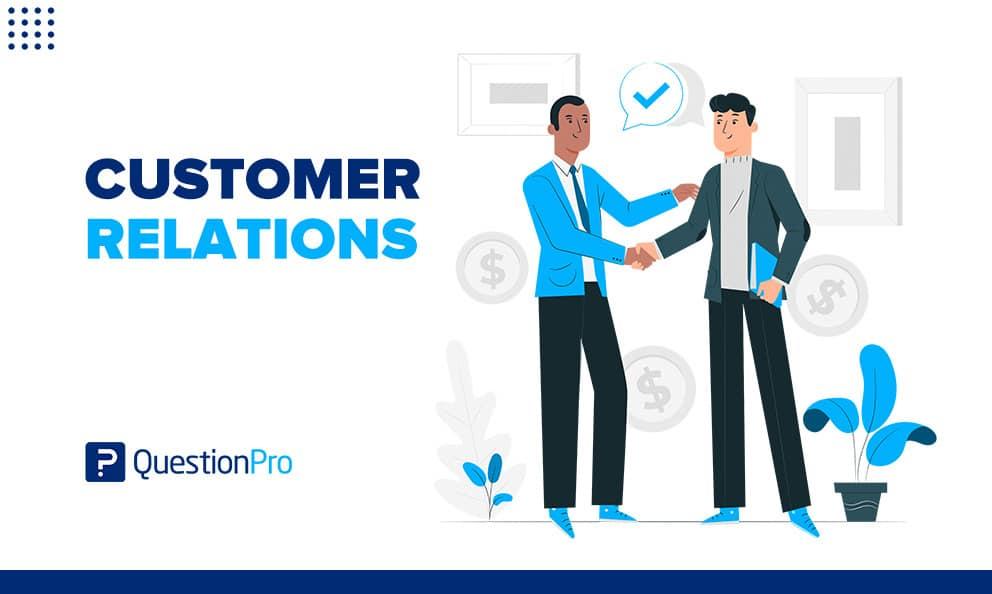
Getting to Know Your Customers on a Personal Level
Building strong customer relationships begins with understanding your clients on a deeper, more personal level. When you take the time to learn about their interests, preferences, and pain points, you create a foundation of trust and loyalty. Here are some effective strategies to forge those vital connections:
- Conduct Surveys: Use brief surveys to gather insights about customers’ preferences and expectations. Tailor your questions to learn what excites them, helping you to better meet their needs.
- Utilize CRM Tools: Implement customer relationship management (CRM) systems to track interactions and preferences. These tools can help personalize the customer experience significantly.
- Engage on Social Media: Use social platforms to interact with customers in real time. Respond to comments and messages promptly, showing that you value their input.
- Host Customer Events: Organize meet-and-greet events, webinars, or workshops to foster direct interaction. This personal touch can transform a one-time buyer into a loyal advocate.
Personalization is key when it comes to customer relationships. Consider these tactics to ensure your communication resonates:
- Segment Your Audience: Divide your customer base into segments based on demographics or behavior. This allows for more targeted messaging that feels less generic and more relevant.
- Personalized Messages: Use customers’ names and reference their past purchases in your communications. A simple touch can make them feel valued and recognized.
- Send Birthday Greetings: Acknowledge special occasions like birthdays with personalized offers or messages. This small gesture can make a big impact on customer loyalty.
Lastly, remember that feedback is a two-way street. Make it easy for customers to share their thoughts by:
- Encouraging Reviews: Ask for reviews after purchase and showcase them on your website. This not only builds credibility but also shows you value their opinions.
- Creating Feedback Loops: Regularly solicit feedback and demonstrate how you’re implementing it. This will show customers that their voices truly matter to your business.
the more you know your customers and acknowledge their individuality, the stronger your relationships will become. Let them know you’re not just interested in their business, but in them as individuals. When you invest in these connections, you’re setting the stage for lasting loyalty.
The Power of Active Listening in Customer Engagement
Active listening is more than just hearing words; it’s about understanding the emotions and intentions behind them. When you engage with customers, showing that you genuinely care about their thoughts can dramatically enhance your relationship. By focusing on their needs and demonstrating empathy, you create a space where customers feel valued and heard.
Consider these crucial aspects of active listening:
- Full Attention: Put away distractions, make eye contact, and signal your engagement with nods or verbal affirmations.
- Reflective Responses: Summarize what the customer has said to ensure clarity and to show that you are actively processing their thoughts.
- Open-Ended Questions: Encourage deeper dialogue by asking questions that require more than a simple ‘yes’ or ‘no’ to answer.
- Empathetic Reactions: Acknowledge their feelings, whether it’s frustration over a service issue or excitement about a new product.
When customers feel listened to, they are likely to share more information. This insight is invaluable as it allows you to tailor your offerings and communication strategies to meet their expectations. It’s a win-win: customers feel appreciated, and you gather crucial data to enhance your business strategy.
Incorporating active listening into your customer interactions can also boost loyalty. When customers perceive that they have a voice, they are more likely to stick with your brand. They’ll be your best advocates, sharing their positive experiences with others. To illustrate this, here’s a simple breakdown of the benefits:
| Benefit | Impact |
|---|---|
| Increased Customer Satisfaction | Higher likelihood of repeat business |
| Stronger Customer Loyalty | Reduced churn rate |
| Enhanced Brand Reputation | Positive word-of-mouth referrals |
| Improved Product Offerings | Higher alignment with customer needs |
Moreover, active listening can transform how you handle complaints. Instead of seeing them as obstacles, view complaints as opportunities to solidify trust and showcase your commitment to customer satisfaction. By listening intently and addressing issues promptly, you can turn a dissatisfied customer into a loyal one, demonstrating that their voice matters.
Ultimately, active listening serves as a bridge between your business and its customers. By fostering an environment where open communication thrives, you create lasting relationships grounded in trust and respect. This investment in listening pays off enormously, translating into sustainable growth and a loyal customer base.
Creating a Seamless Customer Experience Across All Touchpoints
In today’s fast-paced digital world, ensuring a cohesive and engaging journey for customers across all channels is paramount. Every interaction counts, whether it’s through social media, email, or in-store experiences. To create a lasting impression, focus on the following strategies:
- Understand Your Audience: Dive deep into customer data to know who they are, what they prefer, and how they interact with your brand. Tailoring your messaging and services to fit their needs will make them feel valued.
- Consistent Branding: Maintain uniformity in your branding across all platforms. This includes logos, colors, and tone of voice. Consistency builds trust and familiarity.
- Personalization: Use customer insights to deliver personalized experiences. From tailored recommendations to birthday discounts, little touches can make a big difference.
- Omnichannel Availability: Ensure customers can reach you through various channels—social media, chat, email, or phone. Being accessible enhances their experience and makes them more likely to engage.
Another key aspect of a seamless experience is the integration of technology. Leveraging tools like Customer Relationship Management (CRM) systems can streamline interactions and provide a 360-degree view of customer journeys. This ensures that no matter where a customer interacts with your brand, the experience remains fluid and informed.
Moreover, feedback is a two-way street. Encourage customers to share their thoughts and experiences. By actively listening and responding to feedback, you not only refine your services but also show customers that their opinions matter. Create avenues for them to voice their thoughts, such as:
- Online surveys
- Social media polls
- In-store comment cards
| Channel | Key Touchpoint | Customer Action |
|---|---|---|
| Website | Product Pages | Explore offerings |
| Newsletters | Engage with content | |
| Social Media | Comments | Interact & provide feedback |
| In-Store | Customer Service | Seek assistance |
Lastly, don’t underestimate the power of follow-up. After a purchase or interaction, check in with customers to see how they’re enjoying the product or service. This not only shows that you care but can also open doors for future upselling or cross-selling opportunities.
By weaving these strategies together, you can create a customer experience so seamless that it feels almost effortless. When customers feel connected at every touchpoint, they’re more likely to become loyal advocates for your brand.

Utilizing Technology to Enhance Relationship Building
In today’s fast-paced digital world, technology plays a pivotal role in fostering meaningful connections with customers. By leveraging the right tools and platforms, businesses can enhance their relationship-building efforts, ensuring that they resonate with their audience on a deeper level.
Personalization is Key. With customer data analytics, businesses can gain insights into individual preferences, behaviors, and buying patterns. This information can be utilized to tailor communications and marketing strategies, making customers feel valued and understood. For example:
- Customized email campaigns based on purchase history.
- Personalized product recommendations on websites.
- Targeted promotions that align with customer interests.
Engagement Through Social Media. Social media platforms are invaluable for building relationships. They offer a space for direct interaction, enabling brands to engage with customers in real time. Here’s how:
- Responding to comments and messages promptly fosters a sense of community.
- Sharing user-generated content enhances trust and encourages participation.
- Hosting live Q&A sessions can deepen connections and provide real-time value.
Automated Communication can also enhance relationship-building efforts. Tools such as chatbots and automated email responses ensure that customers receive timely information. They help maintain engagement, even when your team is unavailable. However, it’s crucial to balance automation with a human touch, ensuring customers feel connected and valued.
Furthermore, using CRM (Customer Relationship Management) systems allows businesses to track interactions and manage customer relationships effectively. A well-implemented CRM can help in:
| Benefit | Description |
|---|---|
| Centralized Information | All customer interactions are stored in one place, making it easy to access and analyze data. |
| Improved Customer Insights | Data analysis helps predict customer needs, allowing for proactive engagement. |
| Streamlined Communication | Automated reminders for follow-ups and check-ins ensure consistent interactions. |
Virtual Events and Webinars are excellent for enhancing relationships. They provide a platform for sharing valuable insights while allowing customers to connect and engage with your brand. Hosting these events can also position your business as a thought leader in the industry, which fosters trust and loyalty.
Lastly, leveraging feedback tools can significantly improve customer relationships. Regularly soliciting feedback demonstrates that you value customers’ opinions and strive for continuous improvement. Use surveys and polls to gather insights and then act on that feedback to show that their voices are heard and appreciated.
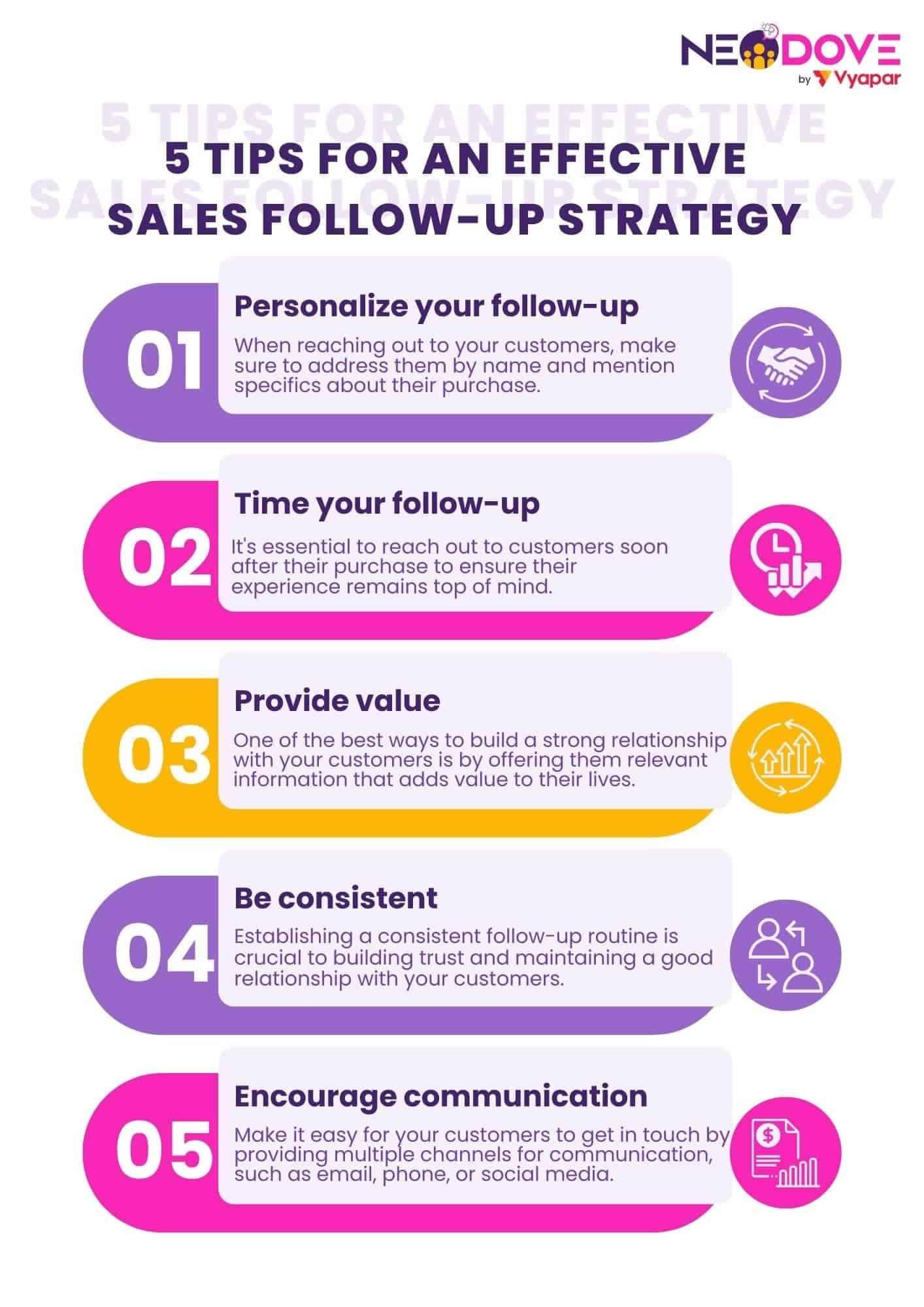
The Art of Follow-Up: Keeping the Conversation Going
Following up with customers isn’t just about checking a box; it’s an art form that can significantly enhance your relationships. When you take the initiative to reach out after a sale or interaction, you’re not only demonstrating that you care, but you’re also laying the groundwork for future conversations and opportunities. Here are some strategies to master the art of follow-up and ensure your customers feel valued.
Personalize Your Outreach
Generic messages can often feel like they’re sent to a crowd rather than a person. By personalizing your follow-up, you create a connection that resonates. Consider incorporating:
- The customer’s name
- Details from previous conversations
- Specific products or services they showed interest in
Personalization shows that you’re invested in the relationship, making it more likely they will engage with you again.
Set Timely Reminders
Timing is crucial in follow-ups. Setting reminders to reach out a few days or weeks after a purchase or interaction shows your commitment. This proactive approach can lead to:
- Feedback on their experience
- Opportunities for upselling or cross-selling
- Building trust and loyalty
By following up at the right time, you’ll stay top-of-mind while also demonstrating your attentiveness.
Use Multiple Channels
Don’t limit your follow-up to just one channel. Utilize a mix of emails, phone calls, and social media messages to connect. Each platform has its strengths:
- Email: Great for detailed information and promotions.
- Phone Calls: Offers a personal touch and immediate feedback.
- Social Media: Engages customers where they spend their time.
This variety can help capture your customers’ attention and keep the conversation flowing.
Solicit Feedback
Follow-ups are the perfect opportunity to ask for feedback. Not only does this show you value your customers’ opinions, but it also provides valuable insights for your business. You might consider:
- Sending a short survey
- Asking specific questions about their experience
- Offering incentives for their time
Feedback can lead to actionable improvements and reinforces that you’re listening to your customers.
Be Authentic
Authenticity can’t be overstated. Your follow-ups should feel genuine and not just like a sales pitch. Share insights, tips, or even industry news that may interest them. By providing value in your communications, you establish yourself as a trusted advisor rather than just a salesperson.
Creating a Follow-Up Schedule
To maintain consistency in your follow-ups, consider creating a follow-up schedule. Here’s a simple table that outlines how you can structure it:
| Timeframe | Action |
|---|---|
| 1 Week Post-Purchase | Thank You Email with Product Tips |
| 1 Month Post-Purchase | Feedback Survey |
| 3 Months Post-Purchase | Special Offer or Discount |
Following this schedule helps keep you organized and ensures you don’t overlook important touchpoints with your customers.
Mastering the follow-up process will not only enhance your customer relationships but also help create a loyal customer base that is excited to engage with your brand. Remember, the goal is to keep the conversation going, so make every interaction count!

Building Trust Through Transparency and Honesty
In today’s marketplace, trust is your most valuable currency. Building strong customer relationships starts with a foundation of transparency and honesty. When customers feel they can rely on you, they are more likely to return and refer others. But how do you establish this trust effectively?
First and foremost, consistent communication is key. Keep your customers informed about everything from product availability to changes in pricing. Regular updates through newsletters or social media can foster a sense of reliability. Here’s how you can do this:
- Share behind-the-scenes content about your business.
- Be open about challenges your company may face.
- Encourage feedback and act on it promptly.
Another critical element is honesty in marketing. Avoid exaggerating the benefits of your products or services. Over-promising can lead to disappointment, and a single negative experience can tarnish your reputation. Instead, focus on what makes your offerings unique and valuable without sugarcoating the details.
Additionally, transparency in pricing can significantly enhance trust. Customers appreciate knowing exactly what they are paying for without hidden fees. A simple, clear pricing structure can make all the difference:
| Service | Base Price | Additional Fees | Total Cost |
|---|---|---|---|
| Basic Package | $50 | $5 setup fee | $55 |
| Premium Package | $100 | $10 setup fee | $110 |
Moreover, showing vulnerability can strengthen connections. Sharing your story, including your failures and lessons learned, can resonate with your audience. It humanizes your brand and makes customers feel like they are part of your journey.
Lastly, consider transparency in customer service. If issues arise, be upfront about them. Address complaints head-on and communicate how you plan to rectify the situation. This approach not only solves immediate problems but also builds a long-term relationship based on trust.
By embedding these practices into your business model, you’ll create an environment where customers feel valued and secure. Remember, trust doesn’t just happen overnight; it’s cultivated through consistent, honest interactions.
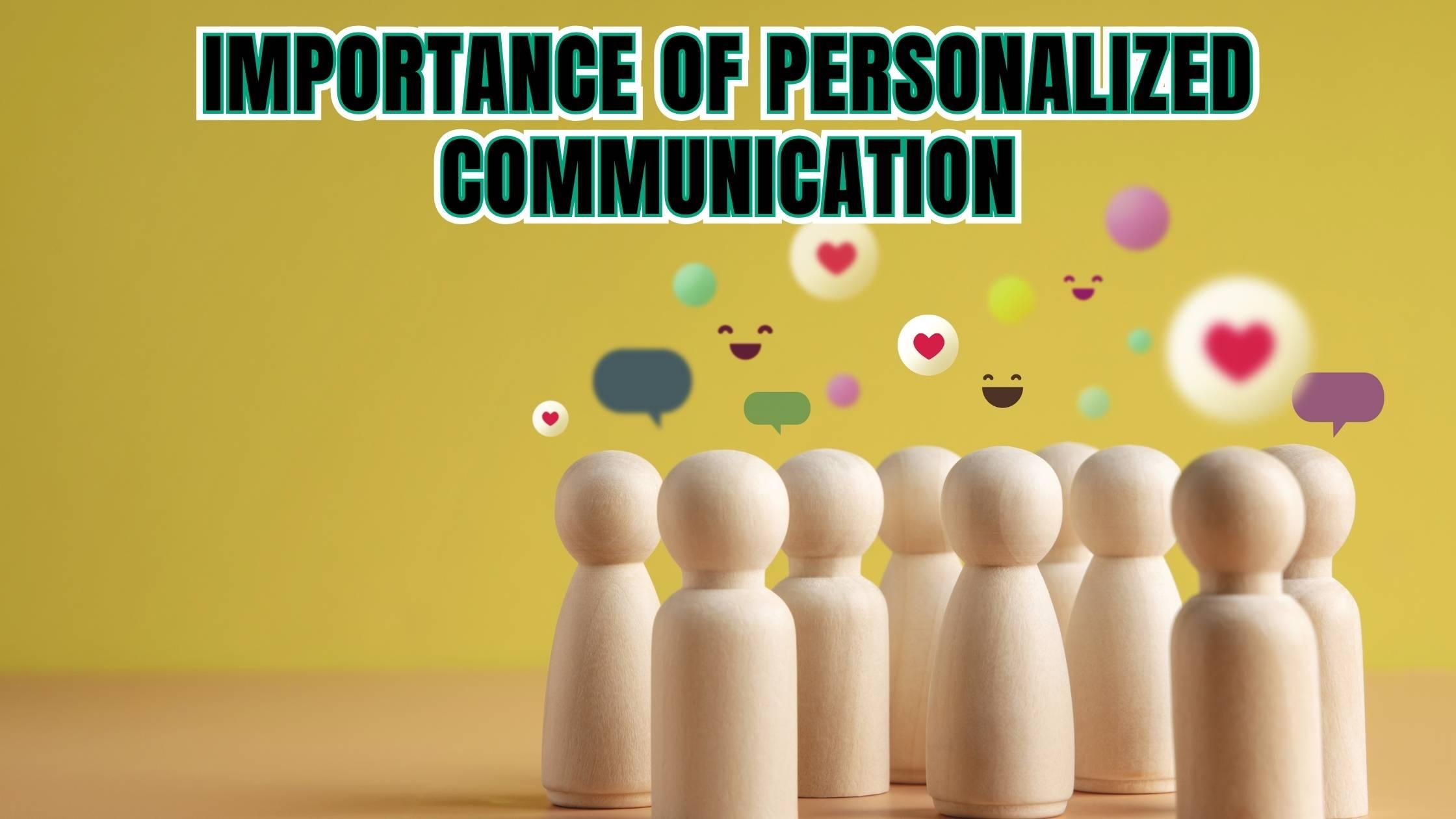
Personalizing Communication to Make Customers Feel Valued
In today’s competitive landscape, generic communication can leave customers feeling overlooked and undervalued. Personalizing your communication is essential to foster a deeper bond with your customers, making them feel special and appreciated. By tailoring your messages, you can create a more engaging experience that resonates with their individual needs and preferences.
Start by gathering data on your customers’ behaviors and preferences. This includes understanding their purchase history, browsing habits, and even feedback from previous interactions. By leveraging this information, you can segment your audience and craft targeted messages that speak directly to their interests. For instance:
- Personalized Emails: Use the customer’s name and reference previous purchases to create a connection.
- Special Offers: Send tailored promotions based on their buying habits—such as discounts on products they’ve shown interest in.
- Relevant Content: Share articles or resources that align with their interests, enhancing their knowledge and relationship with your brand.
Another effective strategy is to utilize customer feedback actively. Encourage your customers to share their thoughts through surveys or reviews, and then genuinely respond to their input. When customers see that their voices matter, they feel valued and trusted. This can be further enhanced by:
- Thank You Notes: Send personalized thank-you messages after a purchase, acknowledging their contribution to your business.
- Follow-Up Communication: After a transaction, reach out to ensure they are satisfied, which showcases that you care about their experience.
Incorporating personalization into your customer service interactions is equally vital. Train your staff to recognize returning customers and reference previous interactions. This creates a sense of familiarity and comfort, enhancing the overall customer experience.
To illustrate the impact of personalized communication, consider the following data on customer engagement:
| Type of Communication | Customer Engagement Rate |
|---|---|
| Personalized Emails | 40% |
| Generic Newsletters | 15% |
| Targeted Offers | 35% |
By personalizing every touchpoint, from email marketing to customer service, you reinforce the message that each customer is important. Remember, personalization is more than just using a name; it’s about understanding who your customers are and what they truly value. This not only enhances customer loyalty but also transforms one-time buyers into lifelong supporters of your brand.

Rewarding Loyalty: Strategies to Keep Customers Coming Back
In a world where options are abundant, creating a loyal customer base is more crucial than ever. It’s not just about making a sale; it’s about fostering a relationship that encourages repeat business. Here are some effective strategies to keep customers coming back.
- Personalized Communication: Tailor your messages to individual customers based on their preferences and past interactions. This can be as simple as addressing them by name in emails or sending recommendations based on their previous purchases.
- Loyalty Programs: Implement a system that rewards customers for their repeat business. Points-based systems, tiered rewards, or exclusive discounts can motivate customers to return and engage with your brand.
- Exceptional Customer Service: Go above and beyond to ensure customer satisfaction. Train your staff to handle inquiries and complaints with empathy and efficiency, creating a memorable experience that guests will want to repeat.
- Engagement on Social Media: Use platforms like Instagram, Facebook, and Twitter to stay connected with your customers. Share behind-the-scenes content, exclusive promotions, and respond to comments and messages promptly.
- Feedback Loops: Regularly seek feedback through surveys or reviews. Show customers that their opinions matter by acting on their suggestions, which can enhance their connection to your brand.
Building relationships takes time, but implementing the right strategies can yield a loyal customer base that feels valued and connected. One effective approach is to:
| Strategy | Benefits |
|---|---|
| Personalized Offers | Increases engagement and sales through tailored promotions. |
| Exclusive Access | Encourages loyalty by making customers feel special. |
| Community Building | Creates a sense of belonging and strengthens customer ties. |
Another critical aspect of rewarding loyalty is creating a sense of community. When customers feel like they are part of something bigger than just a transaction, they are more likely to remain loyal. Here are a few ideas:
- Host Events: Organize workshops, webinars, or customer appreciation days that allow your clients to connect with each other and your brand.
- Create a Brand Community: Set up online forums or social media groups where customers can share their experiences, ask questions, and provide support to one another.
- Charitable Initiatives: Engage in community service or charitable giving, allowing customers to participate in causes they care about alongside your brand.
Lastly, remember to celebrate milestones with your customers. Recognizing anniversaries, birthdays, or special achievements can make them feel appreciated and valued. Consider:
- Sending Personal Notes: A heartfelt message can leave a lasting impression.
- Offering Discounts: A special birthday discount can enhance their celebratory mood.
- Highlighting Customer Stories: Share testimonials or success stories on your platform to inspire and engage.
By harnessing these strategies, you not only reward loyalty but also create a nurturing environment where customers feel valued, understood, and connected to your brand. Remember, every interaction counts, and every effort to engage can transform occasional buyers into lifelong advocates.

Soliciting Feedback and Acting on It for Continuous Improvement
Building lasting customer relationships is not just about acquiring new clients; it’s also about nurturing existing connections. A crucial aspect of this nurturing process is actively soliciting feedback from your customers and demonstrating that you value their input. This practice not only empowers your customers but also fosters a culture of continuous improvement within your business.
To effectively gather feedback, consider implementing these strategies:
- Surveys and Polls: Use online tools to create quick surveys or polls that can be easily shared via email or social media. Keep them short and focused to encourage participation.
- Follow-Up Communication: After a purchase or interaction, send a follow-up email thanking customers for their business and inviting them to share their thoughts.
- In-Store Feedback Forms: If you have a physical location, provide feedback forms or tablets for customers to share their experiences while they’re still fresh in their minds.
- Social Media Engagement: Monitor social media channels for comments and questions, and engage with customers to gather their thoughts and feelings about your products or services.
- Customer Interviews: Reach out to select customers for in-depth conversations about their experiences. This personal touch can yield deep insights.
Once you’ve gathered feedback, the next step is to act on it. Customers appreciate knowing that their opinions matter, and implementing changes based on their suggestions can greatly enhance their loyalty. Here’s how to effectively act on feedback:
- Analyze and Prioritize: Review the feedback to identify common themes and prioritize which issues need immediate attention. This will help you allocate resources effectively.
- Communicate Changes: Inform your customers about the changes you’re making in response to their feedback. This transparency shows that you’re committed to improvement.
- Train Your Team: Ensure that your employees are aware of the feedback and the changes being implemented. Training can help reinforce the importance of customer input in service delivery.
- Measure Results: After implementing changes, measure their impact on customer satisfaction and engagement. This will help you assess whether your efforts are paying off.
Here’s a simple table to illustrate the feedback process:
| Step | Description |
|---|---|
| Gather Feedback | Utilize various channels to collect insights from customers. |
| Analyze Data | Identify trends and prioritize areas for improvement. |
| Implement Changes | Make adjustments based on the feedback received. |
| Communicate Updates | Keep customers informed about changes and improvements. |
| Evaluate Results | Measure the effectiveness of changes and refine processes as necessary. |
Soliciting feedback and acting on it isn’t just about fixing problems; it’s about building a dynamic relationship where customers feel heard and valued. By demonstrating your commitment to continuous improvement, you not only enhance customer satisfaction but also establish a foundation for lasting loyalty. Remember, every piece of feedback is an opportunity for growth—embrace it, and watch your customer relationships flourish.

Nurturing Relationships Through Consistent Engagement
Building lasting customer relationships hinges on the power of consistent engagement. It’s more than just a transaction; it’s about creating a community, fostering trust, and showing your customers that they matter beyond the sale. Regular interactions keep your brand at the forefront of their minds and help nurture a deeper connection.
Engagement can take many forms, but it’s essential to choose methods that resonate with your audience. Consider utilizing:
- Personalized Emails: Tailored messages can make your customers feel valued and understood.
- Social Media Interactions: Responding to comments and messages promptly creates a sense of community.
- Exclusive Offers: Reward loyal customers with unique promotions to express your appreciation.
- Feedback Opportunities: Allow customers to voice their opinions, demonstrating that you value their input.
One effective way to maintain engagement is through a well-planned content calendar. By mapping out your communication strategy, you ensure that your interactions are timely and relevant. Remember to include various content types, such as:
- Informative Blog Posts: Share insights and tips that provide value beyond your products.
- Webinars and Live Q&As: Create interactive experiences that allow customers to engage directly with your brand.
- Customer Spotlights: Showcase success stories to highlight the value of your offerings.
Another crucial element is leveraging technology to stay connected. Customer Relationship Management (CRM) systems can automate your outreach and make it easier to personalize interactions. The more you know about your customers’ preferences and behaviors, the better you can tailor your engagement strategies.
Consider implementing a loyalty program as well. This not only encourages repeat business but also reinforces the bond you share with your customers. A well-structured loyalty program can include:
| Tier | Benefits |
|---|---|
| Bronze | 5% discount on all purchases |
| Silver | 10% discount + exclusive access to events |
| Gold | 15% discount + personalized service + free shipping |
Remember, consistency in engagement doesn’t mean overwhelming your customers. It’s about finding the right rhythm that keeps your brand relevant in their lives without becoming intrusive. Regularly assess your engagement strategies, stay flexible, and be ready to adapt based on customer feedback and changing preferences.
Ultimately, the goal is to cultivate a relationship built on trust and mutual benefit. By prioritizing consistent engagement, you not only foster loyalty but also encourage advocacy, as satisfied customers become your best promoters. Embrace the journey of building relationships that truly last.
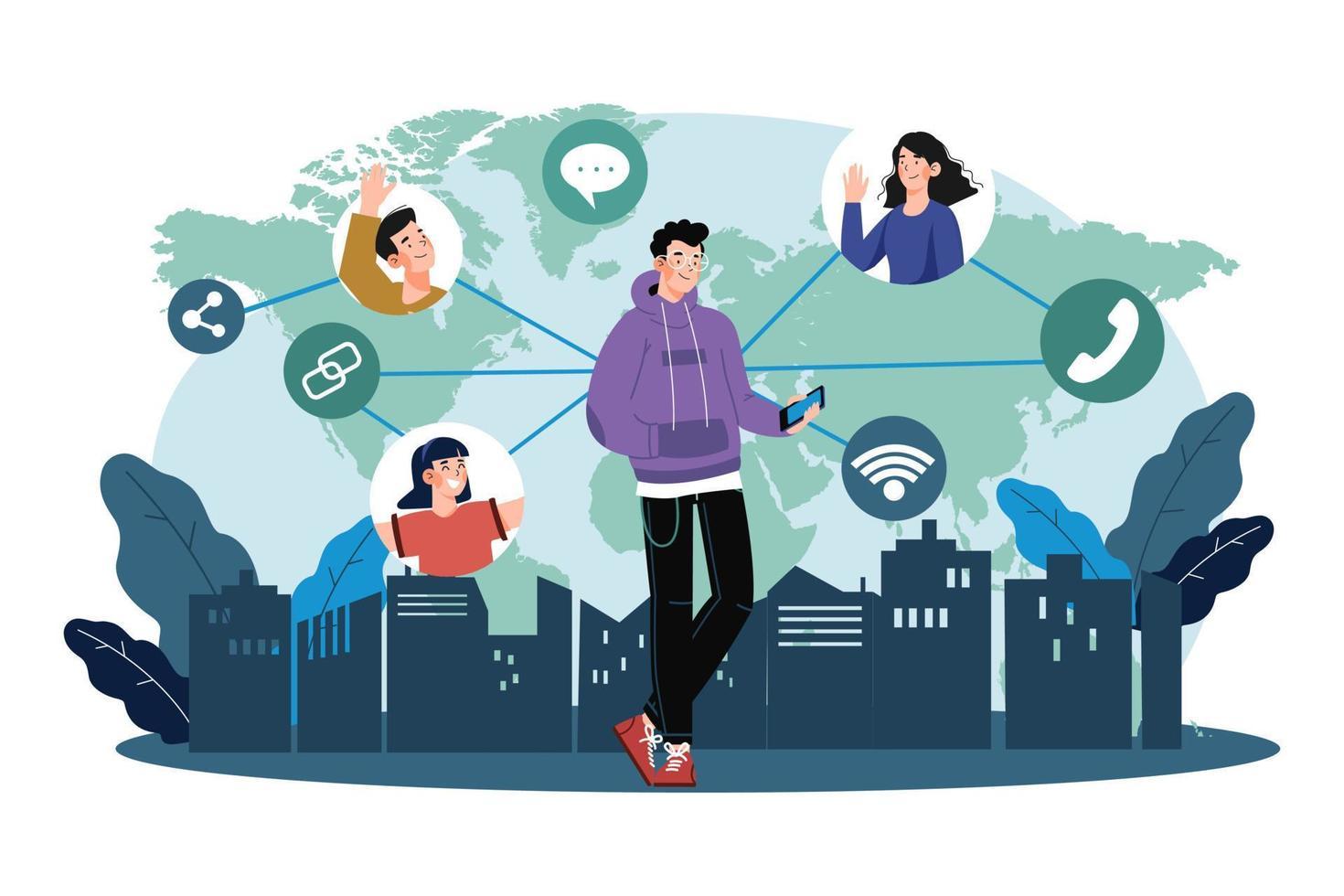
Utilizing Social Media to Strengthen Connections
In today’s digital landscape, leveraging social media is essential for nurturing long-lasting relationships with your customers. The beauty of these platforms lies in their ability to facilitate two-way conversations, allowing brands to engage with their audience in real-time. Here are some strategies to make the most of your social media presence:
- Engage Actively: Don’t just post; participate in discussions. Respond to comments, ask questions, and create polls to encourage interaction. This shows your audience that you value their opinions and are eager to listen.
- Share User-Generated Content: Highlighting posts from your customers not only builds trust but also fosters a sense of community. Encourage your followers to share their experiences with your products and re-share their content, giving them recognition.
- Utilize Stories and Live Videos: These features allow you to showcase your brand’s personality in a more authentic way. Share behind-the-scenes glimpses, host Q&A sessions, or even live tutorials to engage your audience dynamically.
- Run Contests and Giveaways: Not only do these tactics increase engagement, but they also incentivize your followers to interact with your brand. Make sure to encourage sharing to extend your reach further.
Establishing a consistent voice across all platforms is crucial. Your tone and messaging should resonate with your audience, reflecting your brand’s identity. Being relatable helps build trust and loyalty. Regularly analyze your social media metrics to understand what content your audience resonates with the most, allowing you to refine your approach over time.
| Platform | Best Practices |
|---|---|
| Post engaging content, utilize live video, create events. | |
| Use high-quality visuals, stories, and IGTV for deeper engagement. | |
| Keep it conversational, use polls, and share quick updates. | |
| Share industry insights, engage with professional content. |
Don’t underestimate the power of analytics. Use insights from your social media performance to tailor your content strategy. Understanding your audience’s preferences helps you create targeted campaigns that resonate deeply, leading to stronger connections.
Lastly, always keep the conversation going. Regularly check your DMs and notifications, and don’t shy away from reaching out personally when a customer engages with your brand. This personal touch can make all the difference in creating lasting relationships.
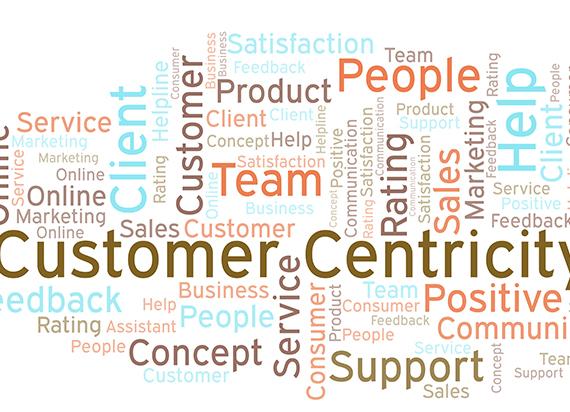
Training Your Team to Foster a Customer-Centric Culture
Creating a customer-centric culture requires more than just desire; it involves training your team to embody the values of customer service in every interaction. Start by integrating customer-centric training into your onboarding process. New hires should not only learn the technical aspects of their role but also the importance of empathy and connection with customers.
Consider hosting regular workshops that focus on skills such as active listening, effective communication, and problem-solving. These workshops can be interactive, allowing team members to role-play various customer scenarios. This experiential learning fosters a deeper understanding of customer needs and encourages employees to think like customers themselves.
Encouraging feedback is another vital component. Create an open environment where team members feel comfortable sharing insights from their interactions with customers. You can implement regular feedback sessions where employees discuss challenges and successes. This not only helps in refining strategies but also empowers your team to take ownership of customer relationships.
Recognize that every interaction is an opportunity to build a lasting relationship. Equip your team with tools and techniques to personalize their interactions. For example, implementing a CRM system allows employees to track customer preferences and previous interactions, making follow-ups more meaningful and personalized.
Celebrate small victories to reinforce a customer-centric mindset. Highlight stories of exceptional customer service during team meetings or through internal newsletters. By recognizing those who go above and beyond, you motivate others to adopt similar practices, creating a ripple effect throughout your organization.
Lastly, make sure your team understands the impact of customer loyalty on the business. Share data that illustrates how long-term relationships can lead to repeat business and referrals. When employees see the connection between their efforts and the company’s success, they are more likely to prioritize customer satisfaction.
| Training Focus | Expected Outcome |
|---|---|
| Active Listening | Better understanding of customer needs |
| Empathy Development | Stronger emotional connections with customers |
| Problem-Solving Skills | More effective resolution of customer issues |
| Personalization Techniques | Enhanced customer experience |

Celebrating Milestones and Special Occasions with Customers
Building strong customer relationships means celebrating the moments that matter most to them. Acknowledging milestones and special occasions can create lasting bonds and turn a one-time buyer into a loyal advocate for your brand. Here are some effective ways to incorporate celebrations into your customer engagement strategy:
- Personalized Messages: Send out customized emails or cards to recognize birthdays, anniversaries, or other significant events. A simple, heartfelt message can go a long way in making customers feel valued.
- Exclusive Offers: Provide special discounts or gifts during milestone moments. For example, a birthday discount or an anniversary gift encourages customers to celebrate with your brand.
- Social Media Shoutouts: Celebrate customer achievements by featuring them on your social media. Highlight their stories or milestones with your product, fostering a sense of community and appreciation.
- Host Events: Consider organizing events for your top customers to celebrate milestones together. Whether it’s an online webinar or an in-person gathering, these events can strengthen relationships.
It’s also essential to track and remember these important dates. Implementing a simple customer relationship management (CRM) system can help. Below is a quick view of how you might categorize this information:
| Customer Name | Milestone | Date | Celebration Idea |
|---|---|---|---|
| Jane Doe | Birthday | April 5 | Send a personalized coupon |
| John Smith | Anniversary | July 20 | Offer a free gift with purchase |
| Emily Johnson | First Purchase | March 15 | Feature on social media |
Consider creating a loyalty program that rewards customers for their milestones. This can include points for birthdays or bonus gifts on anniversaries, making customers feel like part of an exclusive club.
don’t underestimate the power of feedback. After celebrating a milestone, reach out to customers for their thoughts. This not only shows that you care but helps you improve future celebrations, ensuring they resonate even more with your audience.
By incorporating these strategies, you can create memorable experiences that enhance customer loyalty and foster deeper connections. Ultimately, celebrating milestones is about showing appreciation and recognizing the importance of your customers’ journeys with your brand.
Frequently Asked Questions (FAQ)
Q&A: How to Build Customer Relationships That Last – 15 Top Strategies
Q: Why are long-lasting customer relationships important for a business?
A: Great question! Long-lasting customer relationships are essential because they lead to repeat business, which is often more profitable than acquiring new customers. Satisfied customers are also more likely to refer your business to others. strong relationships create brand loyalty, which can weather market fluctuations and competition.
Q: What’s the first step in building these relationships?
A: The foundation of any solid relationship is communication. Start by listening to your customers. Understand their needs, preferences, and concerns. By genuinely engaging with them, you can tailor your services or products to better meet their expectations. Remember, it’s not just about what you’re selling; it’s about making your customers feel valued.
Q: How can businesses show their customers they care?
A: There are many ways! Personalized emails, handwritten thank-you notes, and special recognition on loyalty programs can all demonstrate that you appreciate your customers. Small gestures can have a big impact. When customers feel valued, they’re more likely to stick around.
Q: Is there a specific strategy that stands out when it comes to fostering loyalty?
A: Absolutely! Implementing a customer loyalty program can be a game-changer. It encourages repeat business by rewarding customers for their loyalty. That’s a win-win! Just ensure that the rewards are appealing and relevant to your target audience.
Q: How important is customer feedback in this process?
A: Incredibly important! Feedback is a goldmine for understanding what your customers like and where you can improve. Regularly solicit feedback through surveys, social media, or direct communication. When customers see you acting on their suggestions, it strengthens their trust and commitment to your brand.
Q: What role does social media play in building these relationships?
A: Social media is a powerful tool for building relationships. It allows for real-time interaction with customers and helps you engage with them on platforms they already use. Share valuable content, respond to inquiries promptly, and highlight customer stories. This creates a community feel that fosters loyalty.
Q: Can a business recover from losing a customer?
A: Yes, it’s possible! If a customer feels dissatisfied, reaching out to understand their experience can help. Apologize if necessary and offer a solution. Often, customers appreciate when a business takes the time to address their concerns. It can turn a negative experience into a positive one!
Q: How does consistency factor into building lasting relationships?
A: Consistency is key! Whether it’s the quality of your products, the level of customer service, or your branding, customers expect a reliable experience every time they interact with your business. If you consistently deliver on your promises, you’ll build trust and loyalty over time.
Q: What’s the biggest mistake companies make when trying to build customer relationships?
A: One major pitfall is treating customers as mere transactions rather than individuals. When businesses fail to personalize their approach, they miss opportunities to connect on a deeper level. Always remember to humanize your interactions and understand that each customer has unique needs and preferences.
Q: How can businesses ensure they’re always improving their relationship strategies?
A: Continual learning is essential. Keep up with industry trends, customer preferences, and emerging technologies. Regularly reassess your strategies and be open to experimenting with new ideas. Engaging with your customers and staying adaptable will help you stay ahead in fostering lasting relationships.
Q: What final tip can you give for nurturing long-lasting customer relationships?
A: Always put yourself in your customers’ shoes. Empathy is a powerful tool in relationship-building. Understand their journeys, celebrate their milestones with them, and show appreciation. When customers feel like you genuinely care, they’re far more likely to remain loyal to your brand for the long haul.
In Retrospect
As we wrap up our exploration of the 15 top strategies for building lasting customer relationships, it’s clear that investing in these connections is not just beneficial—it’s essential. Remember, every interaction with your customers is an opportunity to strengthen that bond. Whether it’s through personalized communication, exceptional service, or simply showing genuine appreciation, each effort counts.
So, take a moment to reflect on what you’ve learned today. Which strategies resonate most with you? Are there areas where you can make immediate improvements? The beauty of customer relationships lies in their potential for growth and evolution. By implementing these strategies, you’re not just cultivating loyalty; you’re creating a community of advocates who believe in your brand.
Now is the time to take action! Start small, be consistent, and watch as your relationships flourish. Your customers are not just transactions; they are the heart of your business. Invest in them, and you’ll reap the rewards for years to come.
Thanks for joining me on this journey to building meaningful connections. Here’s to your success in nurturing relationships that last!




